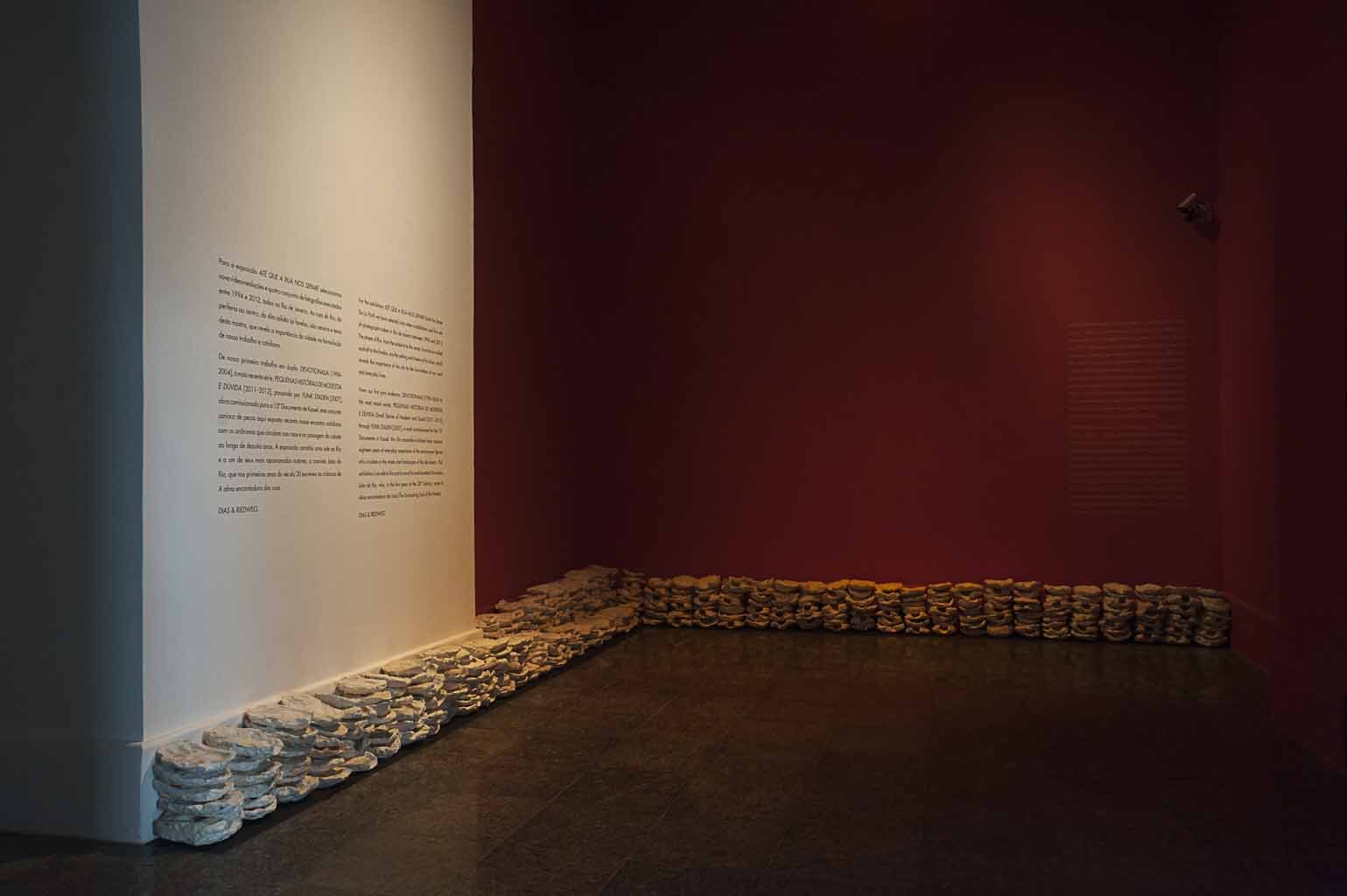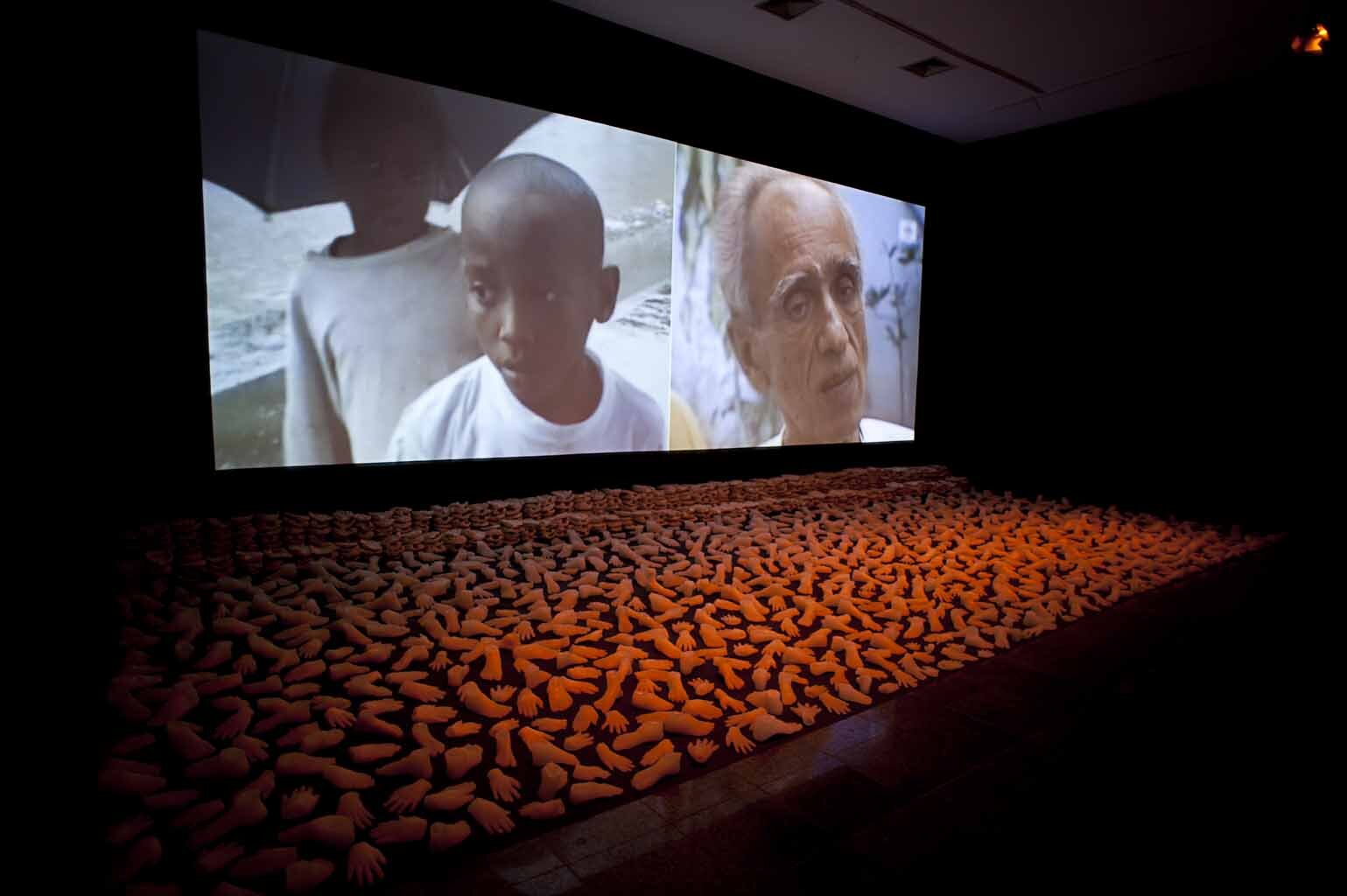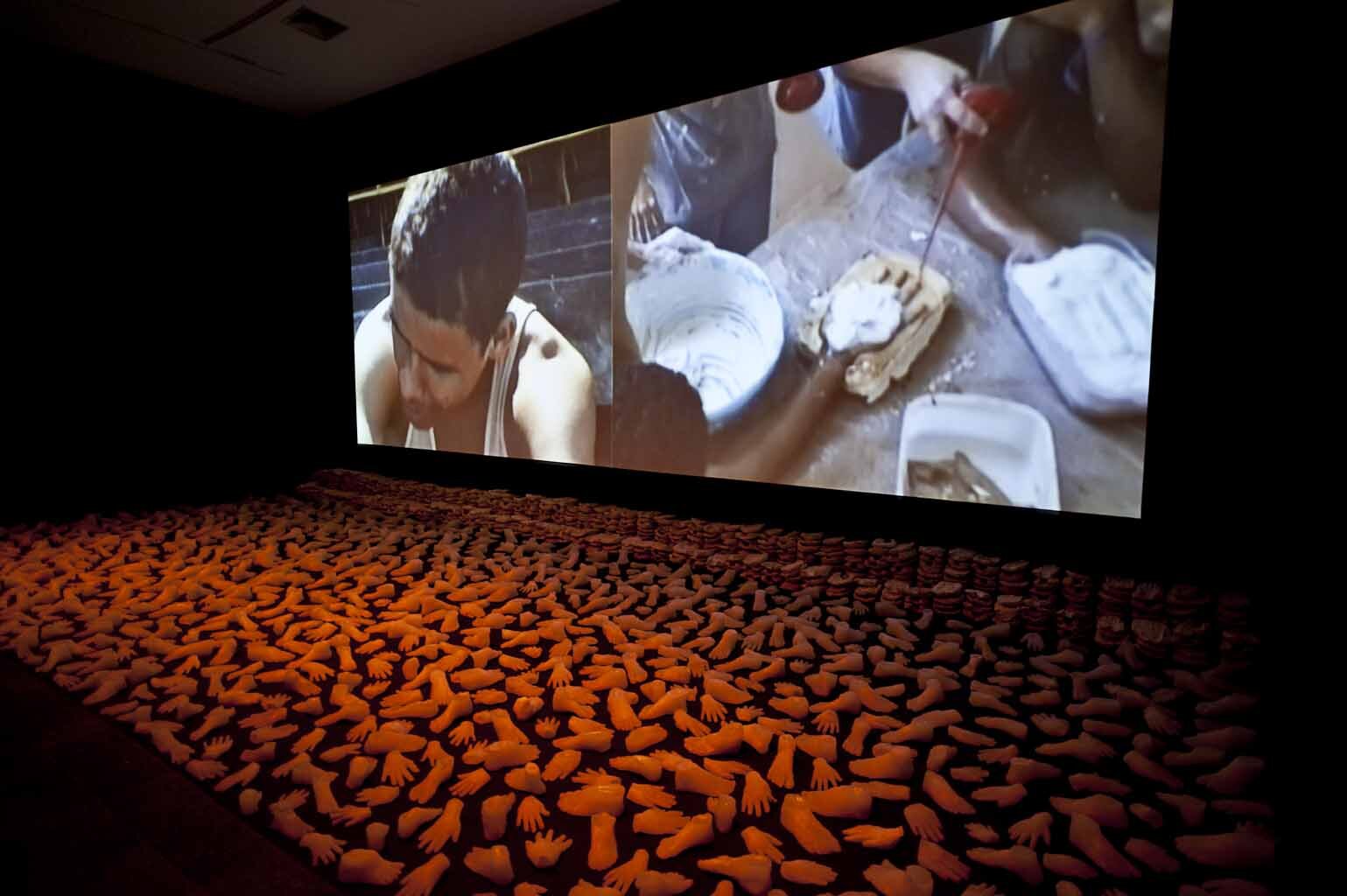DEVOTIONALIA
1995
Public art project and video installation with audio
1.286 wax castings and 2.500 plaster moulds
Loop: 46’34” | Variable dimensions
Throughout 1995, Dias & -Riedweg hosted a mobile workshop for children and adolescents living on the streets of Rio de Janeiro. The artists taught the youngsters to make wax castings of their own hands and feet, after the tradition of amulets and votive offerings, the reifications of some wish or need. The process, which was recorded on video, resulted in 1,286 pieces presented as a large–scale installation, a sort of collective ex–voto transferred from the religious domain into the museum space, where it addresses society directly.
This work was produced at a time when Rio was experiencing frequent and often fatal attacks on children and adolescents living on the streets, including mass murders around the Candelária cathedral, and in the Vigário Geral community. The city’s urban violence is directly linked to the drug trade and to the heavy–handed tactics of a corrupt police force. Although various social movements and NGOs emerged, public care and educational policies have barely begun to be implemented. By the time the Devotionalia Project came to a close in 2004, more than the half of its 600 participants had lost their lives under violent circumstances. As an act of remembrance, Catherine David commissioned a video protocol of the ten–year process and the artists donated the original installation to the National Museum of Fine Arts of Rio, where it remains as a testament to these children’s existence.





















Installations: MAM Museu de Arte Moderna do Rio de Janeiro, 1995; Kaskadenkondensator Basel, Switzerland, 1996; MAMCO Musée d’art Moderne et Contemporain Genève, Switzerland, 1996; Kornschütte / OT Galerie Lucerne, Switzerland, 1996; Stroom The Hague, Holland, 1997; Kunstverein in Hamburg, Germany, 1997; Salão Negro, entrance of Congresso Nacional do Brasil, Brasilia, 1997; Museum of Modern Art of Tokyo and Museum of Modern Art of Kyoto, Japão, 2004; Donation to Museu Nacional de Belas Artes, Rio de Janeiro, 2005; Centro Cultural da Caixa Econômica Federal de São Paulo and Salvador, 2010; Centro de Artes Helio Oiticica, Rio de Janeiro, 2012

YOU ALWAYS WORK WITH UNEXPECTED POSITIVITY, EVEN WHEN YOU SAY YOU DON'T INTEND TO CHANGE, TEACH, CRITICIZE, CHANGE THE OTHER. BUT SOMETHING CHANGES, AND THIS CHANGE IS THE FUNDAMENTAL FOCUS THAT IS IN BRAZILIAN ART TODAY. YOU REALLY ARE THE PIONEERS OF THIS IDEA THAT CHANGES THE WAY YOU LOOK AT ART. THE POSSIBILITY OF CHANGING THE WORLD IS TO BUILD A WAY OF LOOKING. IT IS FROM THERE THAT THE ARTIST CHANGES THE WORLD. YOU HAVE DONE IT IN A WAY, EVEN WITH A CARTOGRAPHIC EYE, WHICH IS THIS ABILITY TO BE IN PLACES AND FIND A DIFFERENCE THERE, WHEN IT IS POSSIBLE TO WORK.
PAULO HERKENHOFF, INTERVIEW WITH DIAS &RIEDWEG, CATALOGUE SHOW AMERICAS SOCIETY, NEW YORK, 2009
THE Process



























